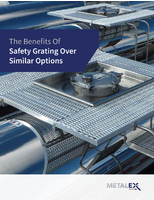Lazer Safe Publishes Guide to Press Brake Guarding and ANSI B11.3
Share:
In September the new ANSI B11.3 - 2012 was finally published after an extensive three year drafting and review process undertaken by an ANSI B11.3 sub-committee. This standard replaces the original B11.3 that was first published in 1973 and subsequently revised in 1982 then again in 2002.
The primary objective of this standard is to eliminate, control or reduce hazards to individuals associated with power press brakes by establishing requirements for the design, construction, operation and maintenance of these machines. To accomplish this objective, responsibilities have been assigned to the supplier (e.g., manufacturer, modifier, rebuilder and integrator), the user, and individuals in the working environment.
A key addition to the standard is the inclusion of close proximity point of operation safeguarding devices. Also known as Laser AOPD the technology behind these devices was relatively new to the global press brake market ten years ago and at the time of the last B11.3 review in 2002 Laser AOPD systems were primarily used in the European Union and shortly after in 2003 started coming into use in the US as a retrofit solution for existing machine. Since that time Laser AOPD have become standard systems for many press brakes sold in the US today, both on imported machines and those manufactured locally. The inclusion of Laser AOPD technology in the B11.3 is a welcome addition to the standard that now gives press brake manufacturers, dealers and users a clear guideline to implementing this technology safely.
As with most safety standards the B11.3 is a lengthy document. To many readers the standard can be confusing and difficult to fully understand. To complement the new standard Lazer Safe has published a simple to understand guide to Laser AOPD systems. This guide provides an overview of Laser AOPD operational functionality and references the B11.3 sub-clause 8.8.7 - Close Proximity Point of Operation AOPD Safeguarding Device. Key sub-clauses of 8.7.7 and the minimum requirements of the standard are clearly explained. This will assist the reader in determining if a Laser AOPD system and the application of the system on the press brake is compliant with the standard.
A copy of the guide can be downloaded from www.lazersafena.com




